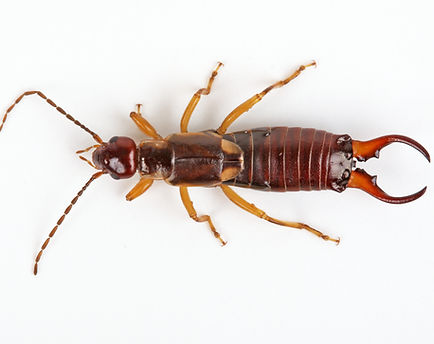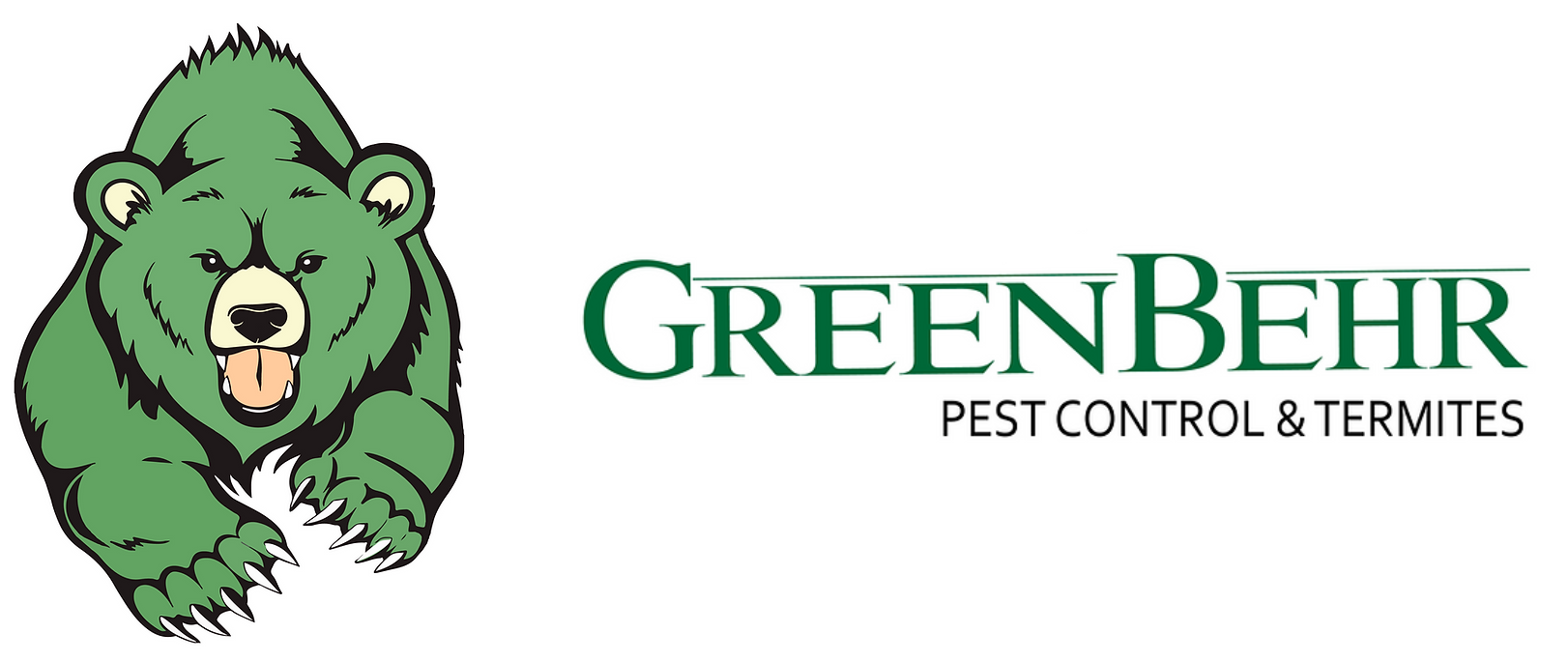
Behavior
Earwigs are small, elongated insects that belong to the order Dermaptera. They are easily recognizable by their pincers or forceps-like appendages at the end of their abdomen. Here are some typical behaviors of earwigs:
- Nocturnal Activity: Earwigs are primarily active during the night, preferring to hide in dark and moist areas during the day.
- Moisture and Darkness: They are commonly found in damp and dark environments, such as under mulch, in leaf litter, under rocks, and in garden beds.
- Omnivorous Diet: Earwigs are omnivorous, meaning they feed on both plant matter and small insects. They are opportunistic feeders and may eat decaying plant material, algae, fungi, and small insects.
- Pincer Defense: Earwigs have pincers, or forceps, at the tip of their abdomen. While they may look intimidating, earwigs primarily use these pincers for defense against predators and during mating displays. They are generally not harmful to humans.
- Maternal Care: Some earwig species exhibit maternal care, with the female protecting and caring for her eggs and newly hatched nymphs until they can fend for themselves.
- Aggregation Behavior: Earwigs can be found in groups, especially during the breeding season or in favorable hiding spots.
- Limited Flight: While some species have wings, earwigs are not strong fliers and prefer to travel by crawling.
- Hiding Behavior: During the day, earwigs hide in crevices, under objects, or in moist areas to avoid direct sunlight.
- Scent Communication: Earwigs use chemical scents, called pheromones, to communicate with each other for mating and territorial purposes.
- Seasonal Variation: Earwigs may enter homes or buildings in search of shelter during cold weather or droughts, leading to occasional indoor sightings.
Earwigs play a beneficial role in the ecosystem by consuming decaying matter and some small pests. While they may sometimes become a nuisance indoors, they are generally not harmful and can be managed with simple preventive measures such as sealing cracks and crevices, reducing moisture, and removing attractive hiding spots. If an earwig infestation becomes problematic, professional pest control services can help address the issue effectively and safely.
Infestation Warning Signs
Signs of an earwig infestation may include the following:
- Sightings: The most obvious sign of an earwig infestation is actually seeing the insects in and around your home, especially during the nighttime when they are most active.
- Damage to Plants: Earwigs are known to feed on plant material, and a significant infestation can lead to visible damage to garden plants, ornamental plants, and crops. Look for chewed leaves, stems, and petals.
- Indoor Presence: If you notice earwigs inside your home, it could indicate an infestation. They are attracted to moisture and may enter through gaps, cracks, or open doors and windows.
- Sheltered Areas: Earwigs seek shelter in dark and moist places during the day. Look for them hiding under mulch, rocks, logs, potted plants, and other damp areas.
- Damage to Seedlings and Sprouts: Earwigs can be particularly damaging to young seedlings and sprouts in gardens and greenhouses.
- Scent Detection: Some people may notice a faint, unpleasant odor when there is a large concentration of earwigs in an area.
- Feeding Marks: When earwigs feed on plant material, they often leave ragged or irregular feeding marks.
- Earwig Eggs: In the case of some species, you may find earwig eggs laid in soil or in hidden crevices.
- Bite Marks on Fruits: Earwigs may leave small, shallow bite marks on fruits like strawberries and soft-skinned vegetables.
It’s essential to properly identify the insect to confirm that you are dealing with earwigs. If you suspect an earwig infestation, you can take steps to reduce their numbers and prevent further problems by addressing moisture issues, sealing entry points, and removing attractive hiding spots. For severe infestations or persistent problems, consider seeking the assistance of a professional pest control service to implement effective control measures.
Top Pest Control Tips
Getting rid of earwigs involves a combination of preventive measures and targeted treatments. Here are some top tips to effectively eliminate earwigs from your home and garden:
- Reduce Moisture: Earwigs are attracted to damp environments. Fix any leaks and drainage issues around your home. Ensure proper ventilation and avoid overwatering your garden.
- Remove Hiding Spots: Earwigs hide in dark and moist areas during the day. Clear away garden debris, such as mulch, leaves, and logs, where they may seek shelter.
- Seal Entry Points: Prevent earwigs from entering your home by sealing cracks, gaps, and openings around doors, windows, and utility lines.
- Use Diatomaceous Earth: Sprinkle food-grade diatomaceous earth in areas where earwigs are present. Diatomaceous earth is a natural desiccant that dehydrates and kills insects.
- Trapping: Create simple traps using rolled-up newspapers or dampened cardboard placed in infested areas. Earwigs will seek shelter in these traps, allowing you to collect and remove them.
- Attract Natural Predators: Encourage natural predators of earwigs, such as birds, toads, and some beneficial insects, into your garden.
- Insecticides: If the infestation is severe and other methods are not effective, consider using insecticides specifically labeled for earwig control. Follow the instructions carefully and use insecticides as a last resort.
- Preventive Barriers: Create a barrier around your garden using materials that earwigs find challenging to cross, such as copper tape or petroleum jelly.
- Remove Attractants: Earwigs are attracted to certain food sources. Clean up fallen fruits and vegetables from the ground, and remove decaying organic matter from your garden.
- Professional Pest Control: If the earwig infestation is extensive and persistent, consider seeking the help of a professional pest control service. They can assess the situation and provide targeted treatments to effectively manage the problem.
Regular monitoring and consistency in implementing these tips will help you successfully manage and reduce earwig populations around your home and garden. Remember that earwigs play a beneficial role in the ecosystem, so strive to strike a balance between managing their populations and maintaining a healthy garden environment.

